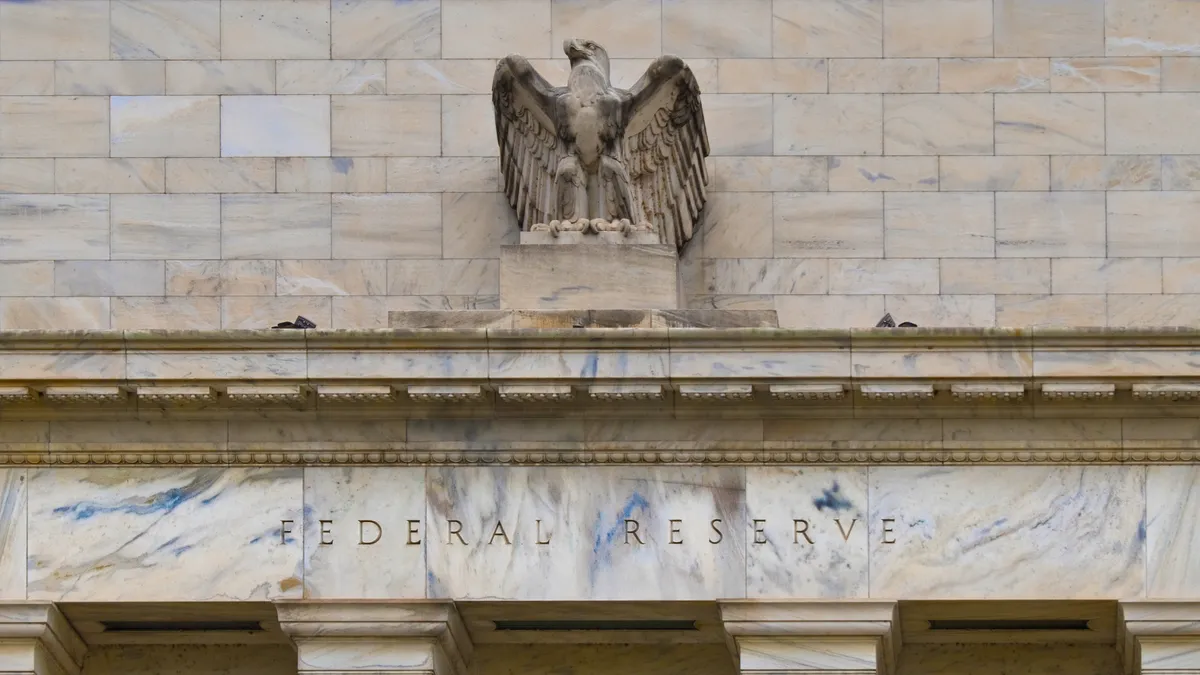Dive Brief:
- Job openings last month fell 338,000 to 8.8 million, adding to signs that the labor market is cooling and fueling predictions that the Federal Reserve will forgo raising the main interest rate at a policy meeting late next month.
- Job vacancies declined for the sixth time in the past seven months to the lowest level since March 2021, the Labor Department said Tuesday. The ratio of available jobs to unemployed workers ebbed to 1.5, or lower than at any time since September 2021.
- “The data is finally beginning to catch up to what we’re seeing on the ground in the labor market,” American Staffing Association CEO Richard Wahlquist said in an email. “New job creation has been slowing down rapidly.”
Dive Insight:
The Fed raised the federal funds rate last month to a range between 5.25% and 5.5% after pausing monetary tightening in June to assess the impact from 10 consecutive hikes since March 2022.
Fed Chair Jerome Powell in a speech Friday noted progress in central bank efforts to curb inflation and said policymakers may leave the benchmark interest rate unchanged at the end of a two-day meeting on Sept. 20.
“Given how far we have come, at coming meetings we are in a position to proceed carefully,” Powell said.
Still, inflation “remains too high,” Powell said, leaving the door open to further tightening if necessary.
“We are prepared to raise rates further if appropriate, and intend to hold policy at a restrictive level until we are confident that inflation is moving sustainably down toward our objective,” he said.
Traders in interest rate futures on Tuesday set 87% odds that the central bank next month will hold the federal funds rate at the current level, according to the CME FedWatch Tool. On Monday, prior to the release of the report on July job openings, traders saw a 78% probability of no change.
“It is critical that future rate hikes be paused until we can see the full effects of the current hikes on the labor market and the overall economy,” Wahlquist said.
Release of the July quits rate, or the number of workers who left their jobs as a percent of total employment, added to signs of loosening in the labor market. The rate eased to 2.3% from 2.4% in June, near the pre-pandemic level in early 2020, the Labor Department said.
At the same time, unemployment fell last month to 3.5%, near a 50-year low and a slight decline from 3.6% in June.
Some private- and public-sector economists — including those at the Fed — have abandoned recession forecasts in recent weeks.
Strong consumer spending and a gradual easing in demand for labor suggest that policymakers may manage to curb inflation to their 2% target without causing widespread unemployment and a pullback in growth, the economists said.
The Atlanta Fed forecast on Thursday that the economy will grow at a 5.9% annual rate during the third quarter, increasing its estimate from 3.9% on Aug. 1.
“Additional evidence of persistently above-trend growth could put further progress on inflation at risk and could warrant further tightening of monetary policy,” Powell said. He noted “robust” consumer spending and signs of vitality in the housing sector after 18 months of weakness.















